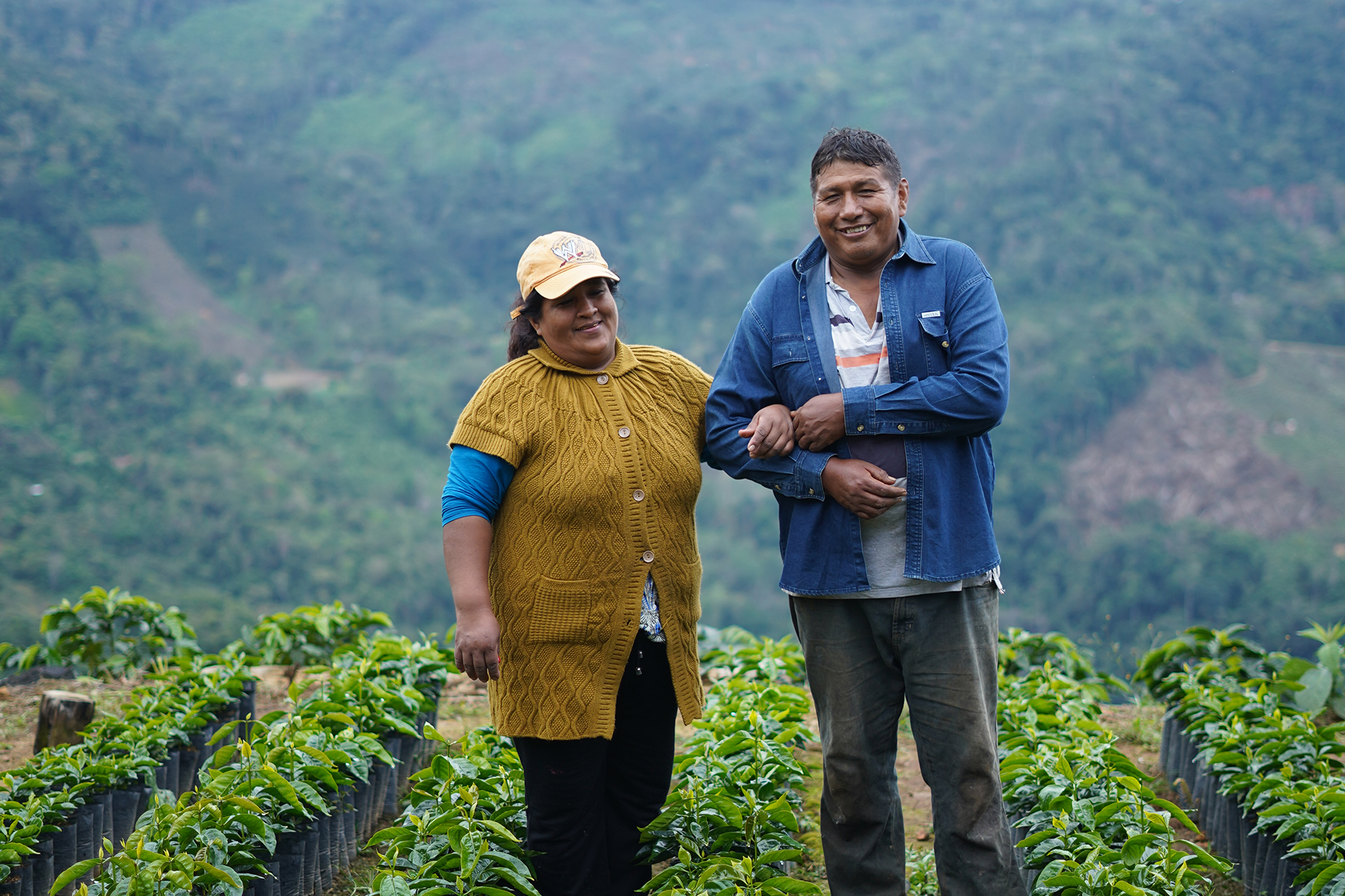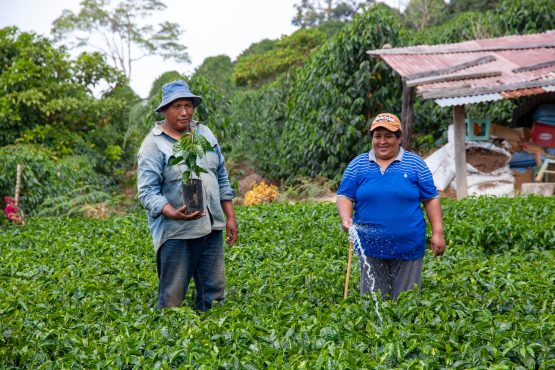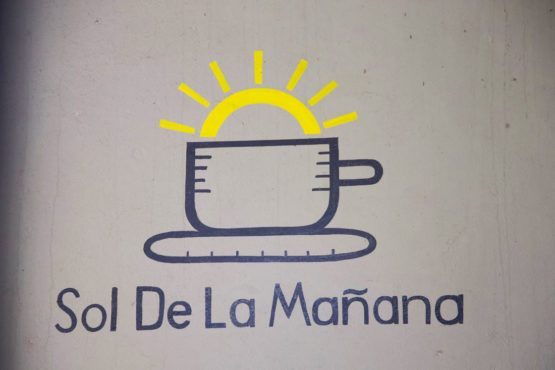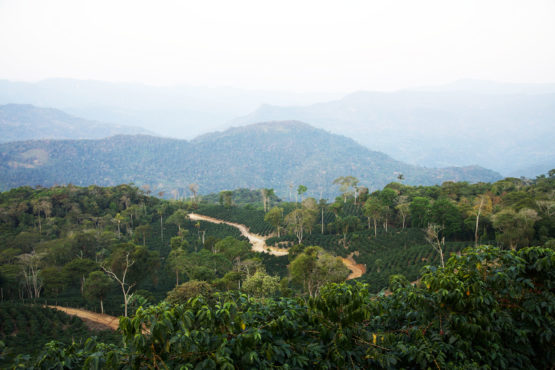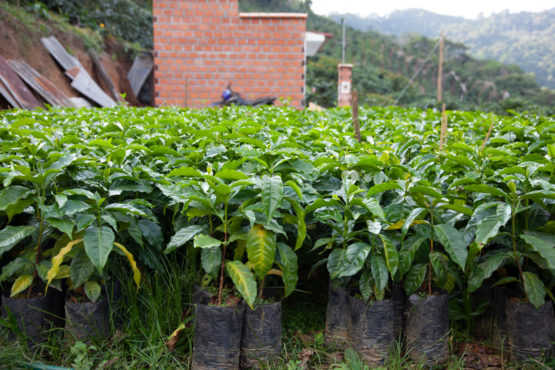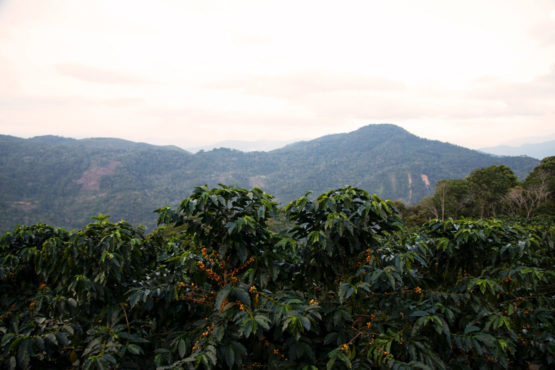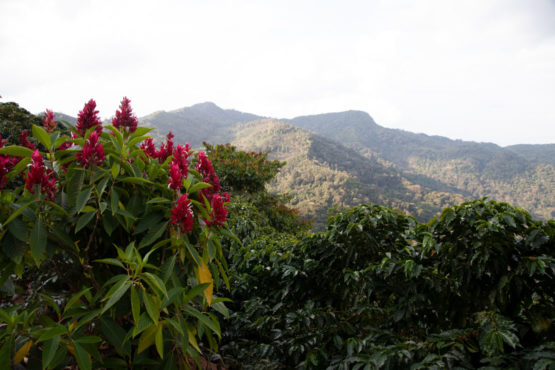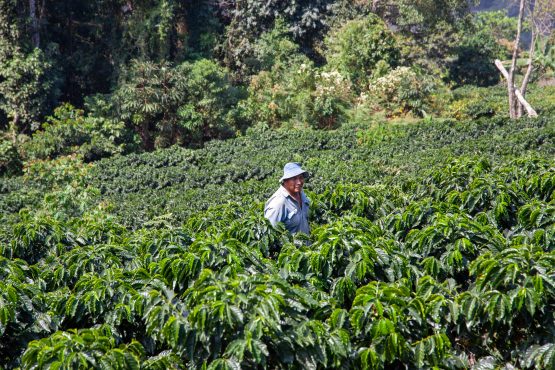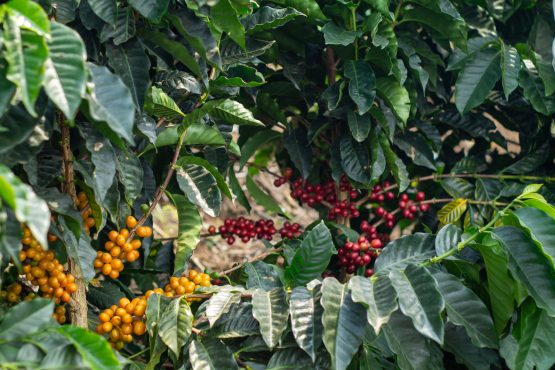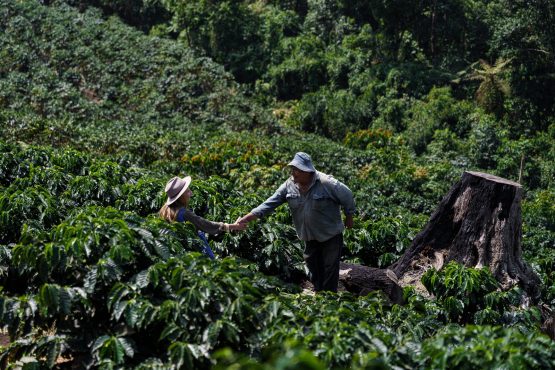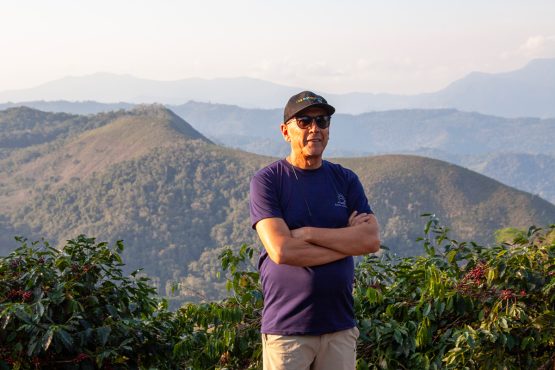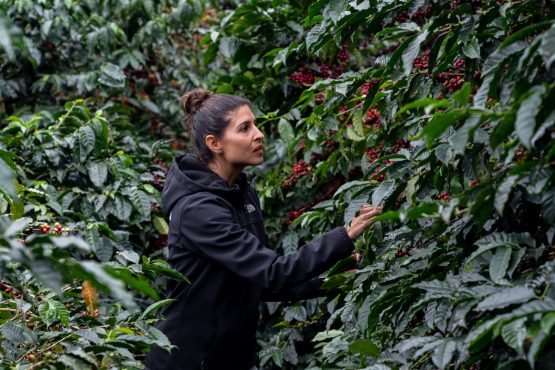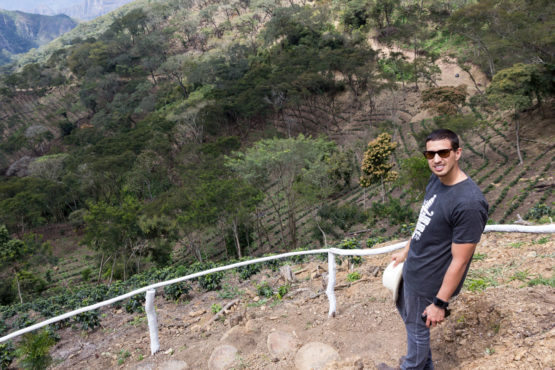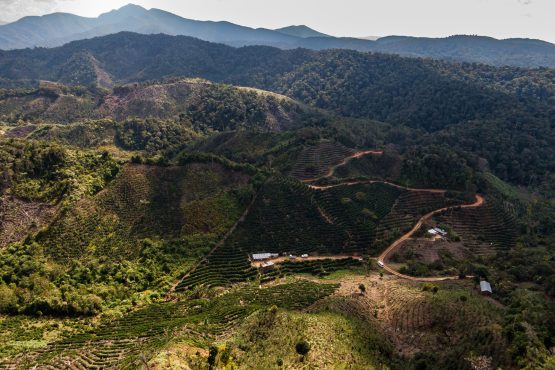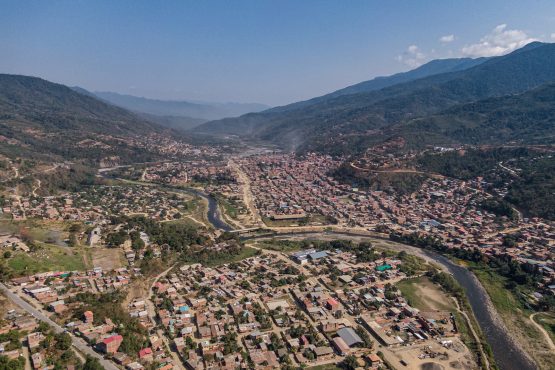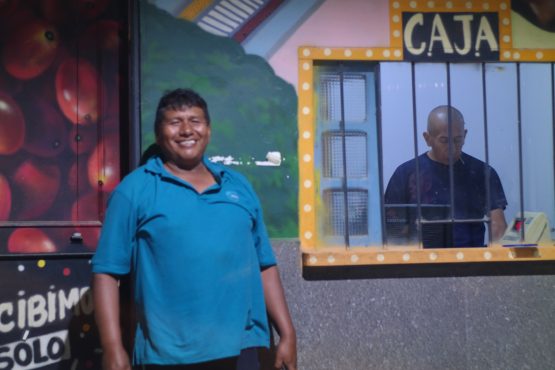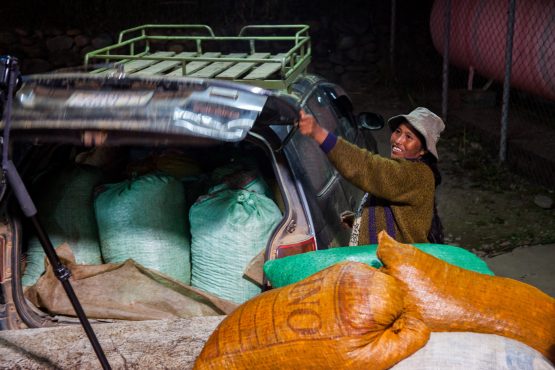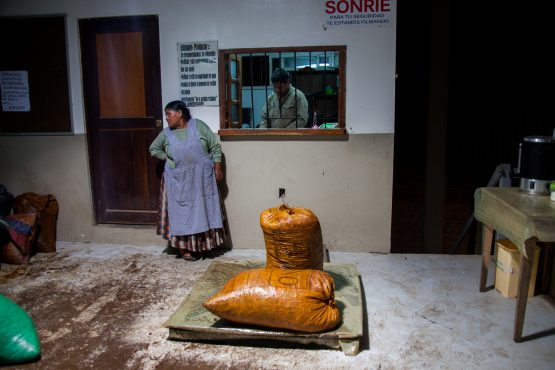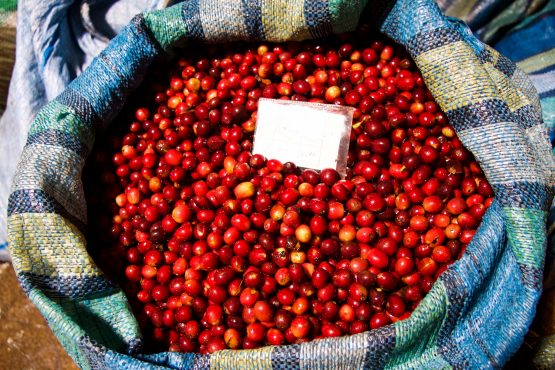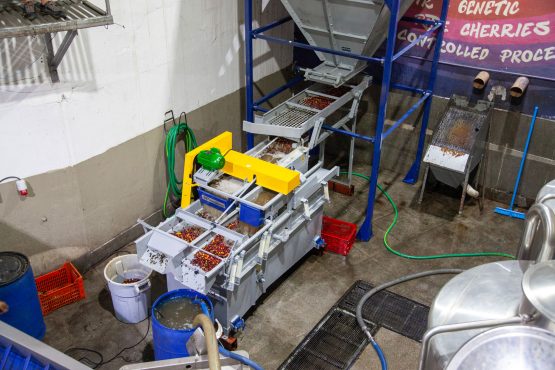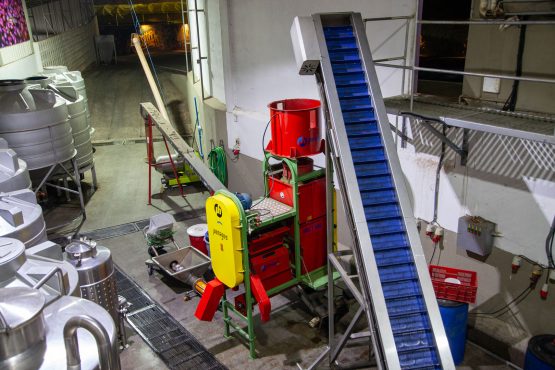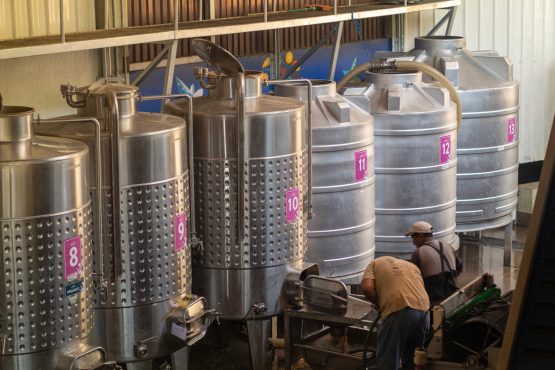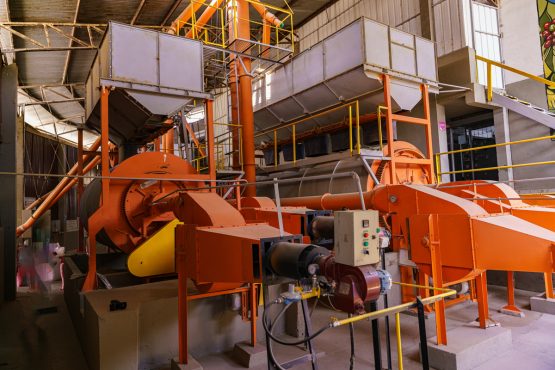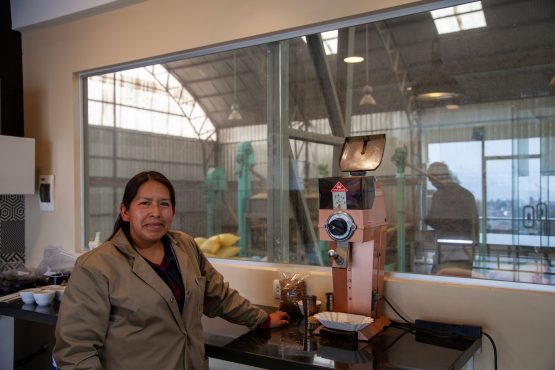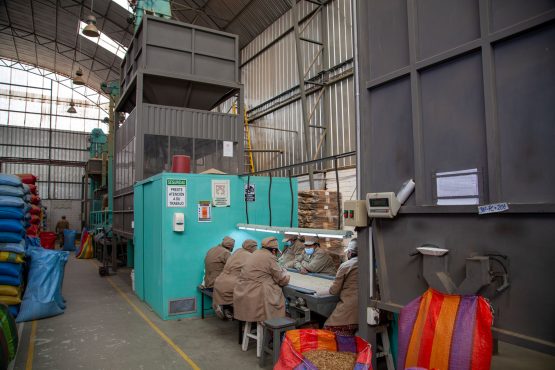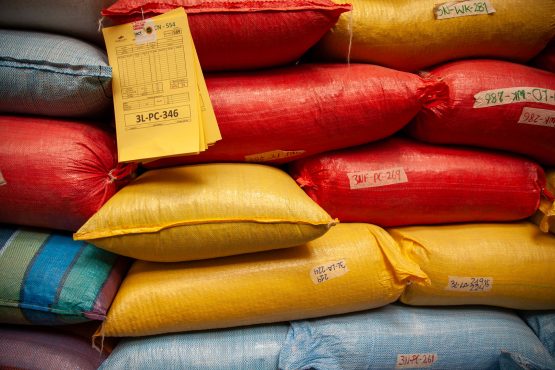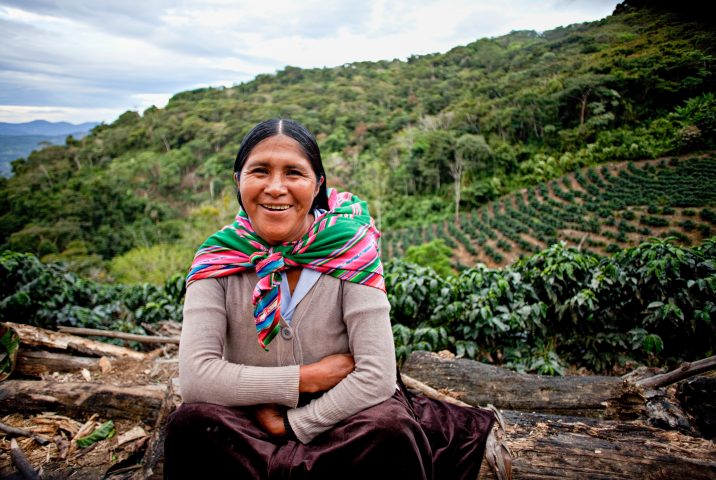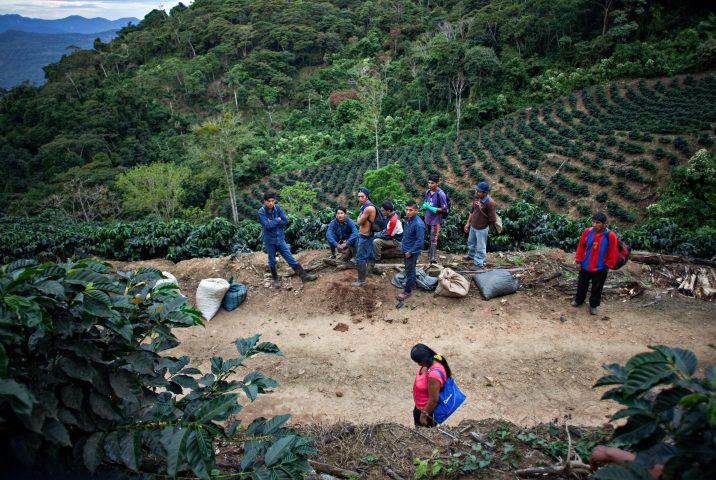Julio Palli
Bright, citric acidity, balanced by sugarcane sweetness. Pink lemonade, raspberry and orange.
This coffee was produced by Julio Palli Mamani and Lupe Medina (both pictured above) in Copacabana, a small and remote settlement located 180 kilometres from La Paz in the heart of the Caranavi province. This region is the epicentre for specialty coffee production in Bolivia, with incredibly high elevations, rich soil, and wide daily temperature ranges providing the perfect conditions for exceptional coffee. Watch our interview with Julio below, to learn more about his life as a coffee producer:
Julio and Lupe have a five-hectare farm called San Bartolomé, which is named after Julio’s father. Julio has lived in the region since 1978, after moving from the town of Sorata (near lake Titicaca) with his family when he was ten. Back then, there was no electricity or running water in the region and delivering coffee into town was perilous. The couple first met in Caranavi, when Lupe left her hometown of Chulumani to work in the region. Eventually, Julio inherited the land from his father and together the couple have farmed the land for around 25 years.
For many years, Julio and Lupe (like many families in Copacabana) farmed traditionally and depended on the local market to sell their coffee, meaning low prices and little reliability. At the time, they only had two hectares planted with coffee, and operations were far from smooth. As Lupe explained on our most recent trip, “The traditional way was not like the way it is today. It was really disorganised. Now, things are more organised and even the seasonal pickers work more efficiently because of it.”
Julio and Lupe joined the Sol de la Mañana program in 2016, ten years after they started working in coffee. This initiative is aimed at improving infrastructure and farming practices at farms in order to create a more sustainable future for coffee in Bolivia. As members of the program, they have followed a very structured series of courses, focused on improving their quality and yield. The curriculum focuses on one aspect of farming at a time and covers things such as how to build a nursery, how and when to use fertiliser, how to prune, has how to selectively pick coffee.
The results of this program have been profound, with improved quality and quantities for all participating producers, including Julio and Lupe. “Sol de la Mañana has opened my eyes. I genuinely enjoy making an effort and learning because it’s been an opportunity to change my life.” Julio told us a few years ago. Since joining the initiative, Julio and Lupe have drastically renovated their plantation, and now have five hectares of very healthy trees, neatly organised in well-spaced and distinct rows (as shown in the video below). At the farm they also have a thriving nursery and – a few years on from joining the program – the family are achieving exceptional yields of more than 30 bags per hectare (prior to 2016, the farm yielded less than 6 bags/hectare) from this investment of the farm. Lupe has also lined the coffee plantation with beautiful flowers, and the family have also planted mandarins, avocados and walusa (a local root vegetable) on the farm for their own consumption.
Perhaps most critically, the family’s involvement in Sol de la Mañana made Julio fall in love with coffee. In the early days, coffee for him was simply a cash crop but not his passion. When he first joined the program, the family’s time was split between a small shop they still run in town (that sells soft drinks) and the farm. Their days were long, and very busy, but as their coffee farm grew, the family was able to focus 100% of their time on coffee production.
“Now all I want to do is be here”. Julio used to tell us. “I have found my passion”.
These days Julio spends most of his days on the farm and gets help from his brother Emilio, and some 30 seasonal workers during the harvest. Lupe looks after their picking staff during the harvest, preparing meals and accomodation for them, and no longer works the fields with Julio. Their daughter Brenda, who also owns her own farm, looks after their shop in Caranavi town during the harvest, and also makes cakes and pastries because she hopes to open a café in the future. Dario, their youngest son, is currently finishing his military service — and Julio hopes he joins the family in working with coffee when he returns.
On our most recent visit to Julio’s farm, we asked what his hopes and dreams were for the future. ““I am already living my dream,” he told us. “I wanted to build a house in Caranavi and now I have that. Now I hope my children learn more about coffee and continue down this path.” During the visit, Julio and Lupe were beaming with pride, showing us how much their farm has grown. Julio intends to limit his production, and no longer wants to continue to expand. He is content with the volumes he grows, and wants to focus on keeping his trees healthy and productive.
When we asked Julio if he wanted to say anything to coffee drinkers in Australia, he said, “Just that they continue to buy our coffee. If they can continue to guarantee a good price for us, we will continue to work hard to have coffee for them, and we will all be better off because of it. A big greeting to all Australians from San Bartolomé!”
Head here to learn more about the wonderful Sol de La Mañana program, and here to learn more about the incredible work the Rodríguez family and Agricafe are doing in Bolivia.
ABOUT CARANAVI
The inhabitants of Caranavi first started farming coffee in the 1950s, when a government-led agrarian reform resulted in small parcels of land (of around 10 hectares in size each) being redistributed back to thousands of largely Aymara families. The Aymara are one of Bolivia’s 36 indigenous nations, who originally lived on the highlands of the Altiplano (a vast plateau of the central Andes that stretches from southern Peru to Bolivia and into northern Chile and Argentina). Along with the Quechuas, who lived in the Bolivian lowlands, both groups immigrated to Caranavi to find a better life through agriculture.
The municipality is located in the Yungas ecoregion, one of South America’s most fertile and diverse locations. The region runs along both sides of the Andes Mountains, and is known for the world’s highest lake, called Titicaca. In the Quechua language, Yungas translates to “the warm lands,” in reference to the rainy, yet warm climate experienced in the region.
Many families in Caranavi, including the Palli family, used to depend on the local market to sell their coffee, which meant low prices and little reliability. Now, they selectively pick their coffee cherries and sell their top-grade coffees for substantially higher prices to our partners the Rodríguez family of Agricafe, who process specialty lots at their wet mill in town.
HOW THIS COFFEE WAS PROCESSED
Along with their team of seasonal workers, Julio carefully hand-picked this coffee and delivered with Lupe it to the Buena Vista washing station via taxi. This meticulously run washing station is owned Agricafe, who painstakingly process each of the exceptional specialty lots they receive separately, allowing for full traceability back to the individual farmer or colony.
Agricafe draw a lot of inspiration from the wine industry in their approach to coffee production, and are always innovating and trialling different processing techniques at Buena Vista. This coffee was processed with experimental techniques, part of the Rodriguez family’s long term strategy to achieve the greatest distinction and diversity in their special lots. Watch the video below to see how Julio’s coffee was processed:
Evenings at the mill are always bustling as arrivals of fresh cherries begin in the late afternoon, after the day’s picking, and continue long into the night. It is widely known around Caranavi that only perfectly ripe cherries will be accepted by Buena Vista and all lots are inspected on arrival prior to processing. In an arrangement somewhat unique to the area, many farmers use taxis to deliver coffee, and by 7 pm a long line of taxis forms along the road leading to the mill.
Cherries for this lot were delivered to Agricafe’s state of the art mill Buena Vista in the evening. After being inspected and weighed, the coffee cherry was carefully sorted by weight using water and disinfected, in a large capacity machine the Rodríguez family have dubbed ‘La Maravilla,’ which translates to ‘the wonder’ due to its efficiency. Following this, the coffee was transported to the mill’s new, water-efficient Penagos mechanical pulper using a conveyor belt. Not only do these pieces of equipment use significantly less resources than in previous years, but they both recirculate water several times before it is treated and returned to the local waterways.
It was then fermented in a sealed stainless steel tank for 72 hours. The team at Buena Vista made sure the lid remained shut for the full period of fermentation, to ensure no oxygen touched the cherries and that the punch-like, boozy aroma remained trapped inside. The wet parchment was then washed with fresh, clean water and carefully machine-dried for 102 hours using a ‘guardiola,’ a horizontal, rotating drum that gets rid of moisture by creating a warm, consistent flow of air around the coffee.
Once the coffee was dry, it was transported to La Paz where it was rested before being milled at Agricafe’s dry mill, La Luna. At this state-of-the-art mill, the coffee was first hulled and sorted using machinery, and then by a team of workers who meticulously sorted the coffee again (this time by hand) under UV and natural light. The mill is one of the cleanest and most impressive we have seen – you can read more about it here.
